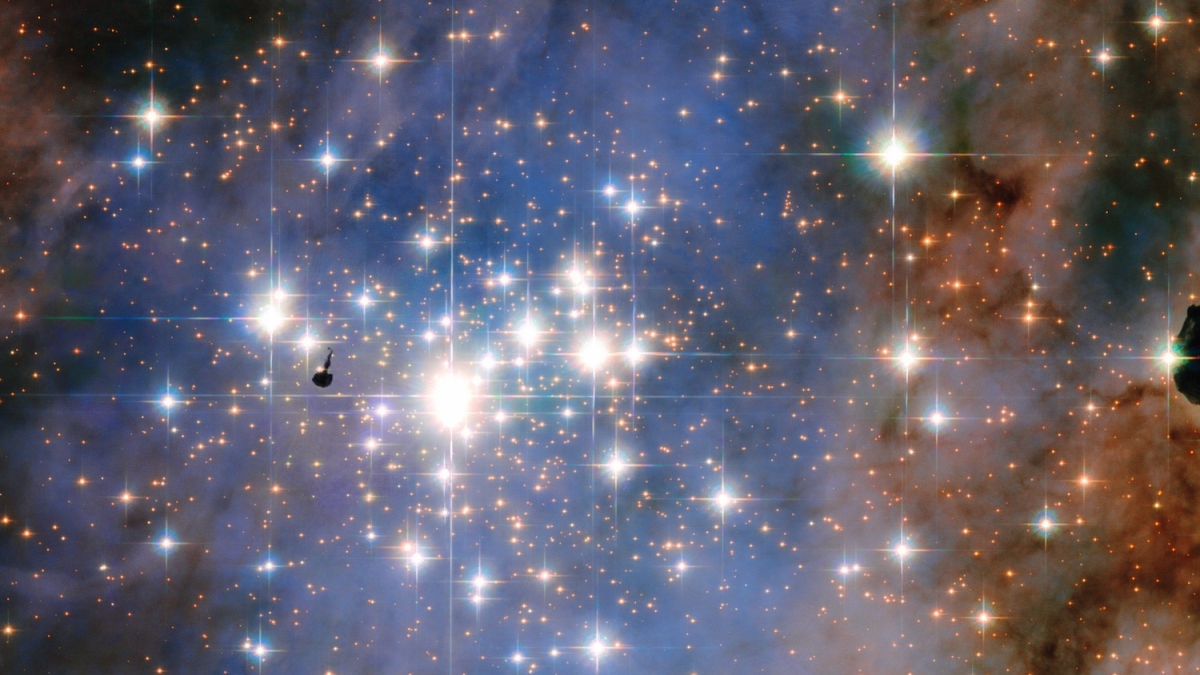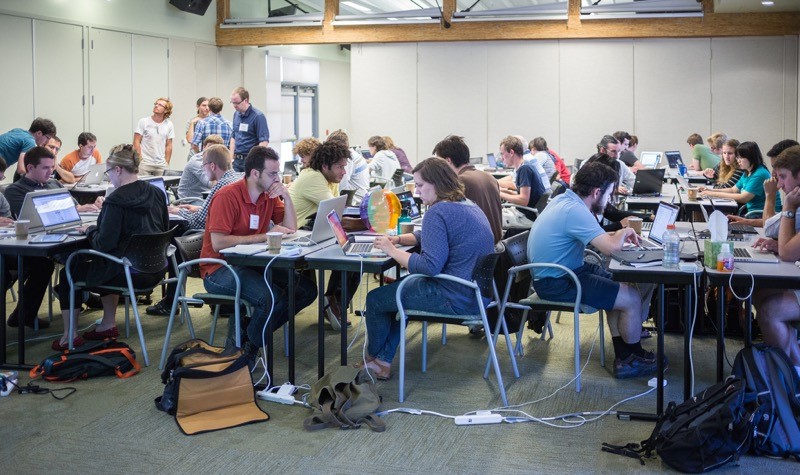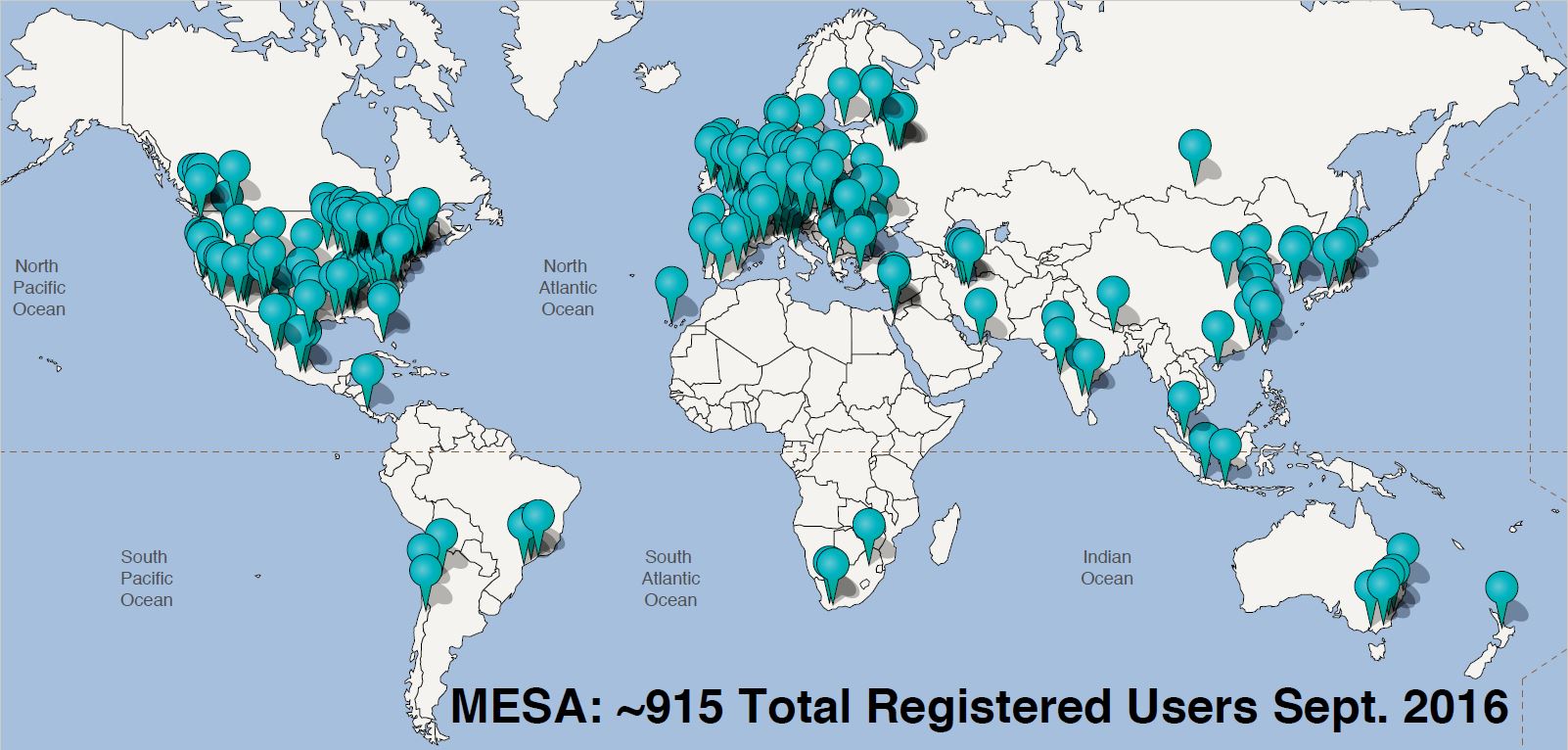ASU’s open-source 'library of the stars' to be enhanced by NSF grant

This NASA/ESA Hubble Space Telescope image features the star cluster Trumpler 14. It houses some of the most luminous stars in our entire galaxy. Image courtesy of NASA/ESA, Jesús Maíz Apellániz (Centro de Astrobiología, CSIC-INTA, Spain)
Stars are the most commonly observed objects in the universe. Now, with a new $2.3 million grant from the National Science Foundation (NSF), researchers at Arizona State University will be upgrading a “library of the stars” to benefit scientists and students alike in their study of the night sky.
The NSF-funded project, “Modules for Experiments in Stellar Astrophysics,” or “MESA” for short, is a suite of open-source libraries designed to gather data from a variety of space missions and in turn drive significant innovation in the stellar, gravitational wave, nuclear, exoplanet, galactic and cosmological communities.
Frank Timmes, an astrophysics professor at ASU’s School of Earth and Space Exploration, is the principal investigator for MESA, along with co-investigators Rich Townsend of the University of Wisconsin and Lars Bildsten of the University of California — Santa Barbara.
“Our goal for this project,” said Timmes, “is to sustain MESA as a key piece of software infrastructure for the astrophysics community, while building new innovative scientific capabilities and educational networks.”
An essential tool in the vast discovery of space, MESA is helping to continuously monitor more than 100,000 stars. The discoveries resulting from MESA-based surveys include revelations about the dynamic impact of waves and magnetic fields, unusual explosive outcomes, and remarkably complex binary star systems.
In addition, educators widely deploy MESA and the prototype MESA-Web cloud resource, which is headquartered at ASU, in their astrophysics courses. The project helps introduce students (like those pictured above) to MESA's active support network for leading-edge scientific investigations, including massive star explosions and magnetic fields in stellar evolution.
With this new NSF funding, researchers are looking to use MESA to enhance science on supernova light curves, develop new computational modes and enable observational breakthroughs. The funding will also help support new cloud-based educational opportunities and advance community education.
Since its inception, the MESA project has attracted more than 900 registered users worldwide, with more than 10,000 downloads of the source code. It has distributed more than 12,000 archived and searchable posts on community discussions of MESA and has been cited approximately 1,000 times. The program also provides an annual summer school program with more than 150 graduates and hosts a web portal for the community to share analysis tools and build provenance.
“The immediate future holds tremendous promise, as both space-based surveys and ground-based facilities come to fruition,” said Timmes. “Our goal is that MESA will advance research capability and strengthen educational outcomes across a significant area of science.”
More Science and technology

ASU scientists help resolve 'missing methane' problem of giant exoplanet
In the quest to understand the enigmatic nature of a warm gas-giant exoplanet, Arizona State University researchers have played a…

Study finds widespread ‘cell cannibalism,’ related phenomena across tree of life
In a new review paper, Carlo Maley and Arizona State University colleagues describe cell-in-cell phenomena in which one cell…

ASU now certificated to build sensitive aerospace, defense instruments in-house
When Christopher Groppi needs a new tool for work, he can’t just go to the hardware store. Groppi is an experimental…

